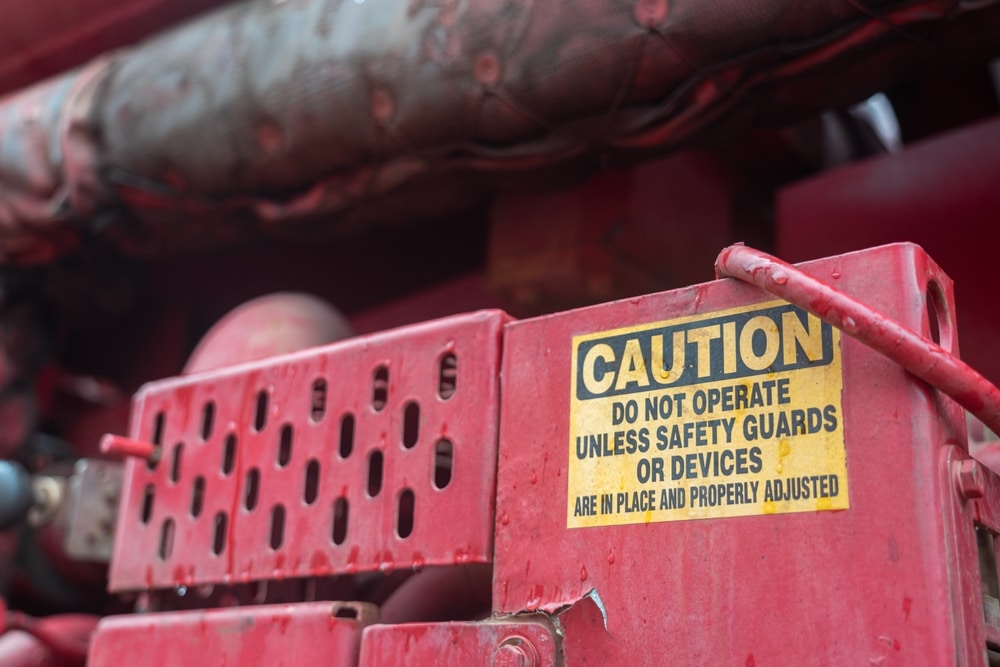OSHA maintains records on the most frequently cited standards from worksite inspections for each fiscal year and compiles a list within particular industries. The latest records outline the top 10 most frequently cited manufacturing standards within the industry during fiscal year 2023 (October 2022 through September 2023). By reviewing these findings, employers can better understand common worksite hazards and associated prevention strategies—thus allowing them to take steps to eliminate potential safety risks, prevent employee injuries and mitigate OSHA penalties. Here’s a list of OSHA’s top 10 most frequently cited manufacturing standards in fiscal year 2023:
- Control of hazardous energy (lockout/tagout)—Year over year, poor lockout/tag-out practices regularly lead to violations for manufacturers. Per OSHA’s standards, any machine that has the potential to release energy must be set to a zero-energy state and locked to prevent the accidental start-up and release of that energy. To protect employees and avoid violations, businesses should create a written lockout/tag-out program that outlines machine-specific lockout/tag-out procedures, employee training practices and protocols for auditing the program annually.
- Machine guarding—Failing to follow machine-guarding practices is not only a common source of injury, but it’s also a frequently cited OSHA standard in manufacturing. In general, machine guards are used to protect employees against direct contact with moving parts of equipment, debris, kickbacks, and mechanical and electrical failures. In general, OSHA requires that all machines include the proper guards. It should be noted that there are specific guarding protocols for individual machines, and employers will need to train their employees regularly on the appropriate machine-guarding protocols.
- Hazard communication—Employees have the right to know about the hazards of chemicals they work with every day and what precautions they must take to remain safe on the job. That’s where hazard communication comes into play. Hazard communication programs typically include a written program, safety data sheets for all hazardous chemicals, an up-to-date list of chemicals, chemical labeling practices and employee training.
- Powered industrial trucks (PITs)—PITs include fork trucks, motorized hand trucks and other vehicles used for moving materials. In terms of safety concerns, PITs often require more stopping distance, have limited visibility and are top-heavy. Complicating matters, PITs are also commonly used in close proximity to other workers, making it even more important to follow safety protocols. Specifically, operators must be properly trained and certified on PIT use. Equipment should also be inspected before use to ensure it is in a safe condition.
- Wiring methods, components and equipment for general use—This standard refers to the practice of using the proper methods when wiring different setups. Requirements include following proper methods for temporary wiring, cable trays, electrical cabinets and switches.
- General electrical requirements—This standard refers to the practice of examining, installing and using electrical equipment of different types, sizes, voltage and current capacity. Requirements include specifications for electrical connections, terminals, guarding live parts and working with 600 volts.
- Mechanical power transmission apparatus—A power transmission apparatus (PTA) is what connects the point of operation to the power source. Common PTA components include belts, pulleys, chains, and sprockets. This standard provides requirements for guarding those components of a PTA.
- Process safety management of highly hazardous chemicals—Process safety management is the safe management of highly hazardous chemicals. The standard includes applicable chemicals with thresholds, a written program, process hazard assessments, operating procedures, employee training and inspections.
- Duty to have fall protection and falling object protection—This standard refers to the practice of identifying hazards and providing protections from those hazards when needed. Requirements include identifying, inspecting and assessing workplace conditions for fall or falling object hazards.
- General personal protective equipment (PPE) requirements—This standard refers to providing, managing and maintaining the proper personal protective equipment for employees. Requirements include identifying required PPE, maintenance, sanitation, replacement and training.
Van Wyk’s Electronic OSHA Reporting Log
As a client of Van Wyk, you receive complimentary access to Van Wyk Connect, our user-friendly solution to help you find the content and tools needed to stay compliant, manage risk, and build a better workforce. The OSHA Log, found within Van Wyk Connect, is a valuable tool for incident tracking, data storage, and effortless generation of OSHA-compliant reports. With our OSHA Log, you can log all incidents, generate and print an OSHA 300, 300A ,and 301 compliant reports, and analyze how you stack up against the industry. There is even an “Ask Incident Advisor” tool that can help you determine whether an injury needs to be reported. To log into Van Wyk Connect and begin utilizing this tool today, visit our website and click the “Login” button at the top right of the screen. If you need help logging in or have forgotten your login credentials, please don’t hesitate to contact us.
Van Wyk Connect Overview
To see firsthand how Van Wyk Connect is a solution for you, watch this short tutorial video below. OSHA Log-specific information begins at the 2:54 mark.
More Information
By reviewing last year’s most frequently cited manufacturing standards, you’ll have a better idea of common pitfalls to avoid in 2024. For additional risk management resources, safety resources, or for help with Van Wyk Connect, contact us today. And remember to follow us on LinkedIn and like us on Facebook to stay up-to-date on industry news and tips!

